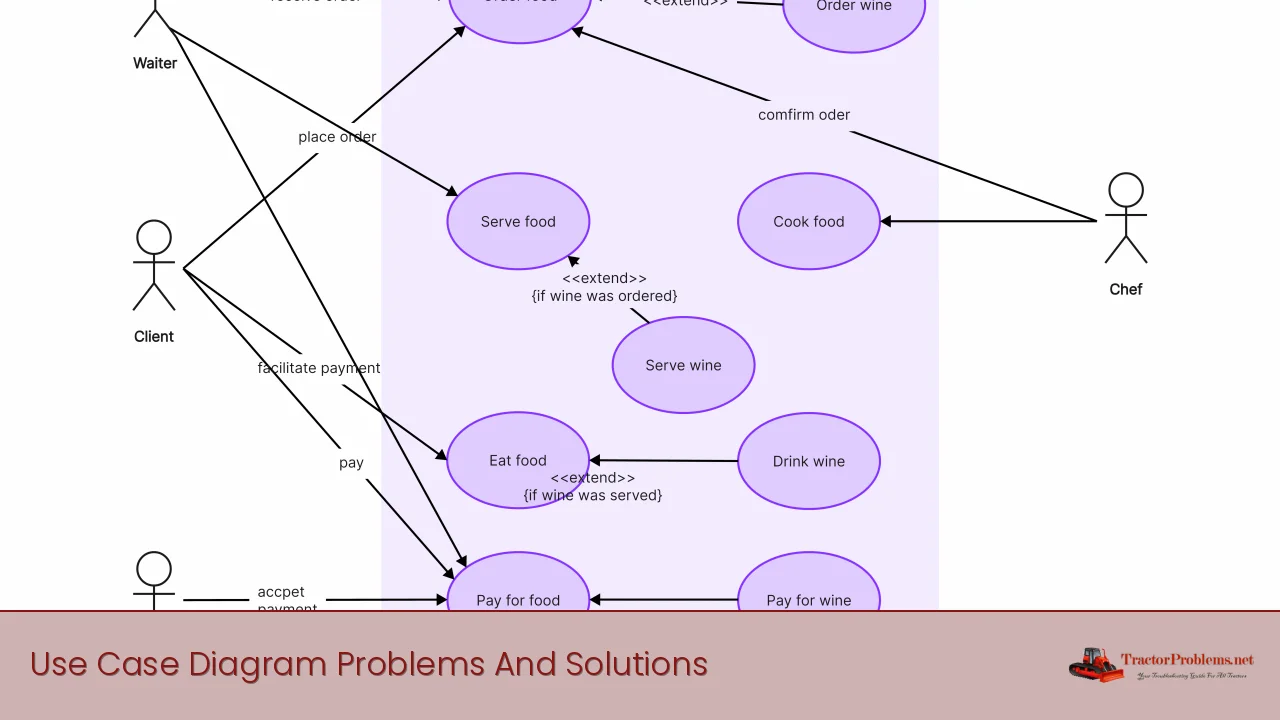Understanding Use Case Diagrams can be a challenge, but with the right guidance, it doesn’t have to be. This comprehensive guide offers expert solutions to the most common Use Case Diagram Problems, providing a comprehensive overview of the solutions and approaches to tackling conundrums. Whether you’re a beginner or an experienced user, this guide will help you understand and troubleshoot any problems you may encounter.
Unlock the Secrets of Use Case Diagrams with Expert Solutions
Whether you’re a beginner or an experienced user, this guide will help you understand and troubleshoot any Use Case Diagram Problems you may encounter. Learn how to identify, analyze, and solve issues quickly with our comprehensive overview of the solutions and approaches to tackling conundrums. Get the answers you need to build the most effective Use Case Diagrams for your project and gain a better understanding of the process. With this guide, you’ll be able to unlock the secrets of Use Case Diagrams and find the best solutions.
Problem: Not Enough Details
The use case diagram can be difficult to understand due to the lack of details included. Without enough information, it can be difficult to interpret the information and identify potential solutions. One of the most common use case diagram problems is the lack of necessary details to help understand the diagram. Solutions to this problem include adding more detail to the diagram, including additional information such as actors, actions, and relationships. Additionally, providing context to the use case diagram by explaining in more detail how the different parts of the diagram relate to each other can also help to make the diagram more understandable.
Problem: Unclear Relationships
When creating use case diagrams, it is important to ensure that the relationships between the different elements are clear and easy to understand. If the relationships are not clearly defined, it can be difficult to comprehend the diagram and identify potential solutions. Another common use case diagram problem is the lack of clarity in defining the relationships between the elements. Solutions to this issue include making sure that the relationships are clearly defined in the diagram, and providing additional explanations or commentary to help make the relationships easier to understand.
Problem: Invalid Connections
Incorrectly connecting elements in a use case diagram can lead to confusion and invalid interpretations. When creating use case diagrams, it is important to ensure that all connections are valid and make sense. Another common use case diagram problem is the incorrect or invalid connections between the elements. Solutions to this problem include double-checking all the connections and ensuring that they are valid and make sense. Additionally, providing additional commentary or explanation can help to make the connections clearer.
Key Takeaways from Understanding Use Case Diagram Problems and Solutions
- Clarify requirements with stakeholders, create a detailed description of the intended behavior, and ensure that the Use Case Diagram accurately reflects the intended functionality.
- Identify areas where the Use Case Diagram is overly simplified and add more detail.
- Review the Use Case Diagram and identify any areas where the design could be improved.
- Break down complex use cases into simpler ones to make the Use Case Diagram easier to understand.
- Review the Use Case Diagram and identify any inconsistencies in the relationships between actors, use cases, and other elements of the diagram.
- Add more detail to the diagram, including additional information such as actors, actions, and relationships.
- Provide context to the use case diagram by explaining in more detail how the different parts of the diagram relate to each other.
- Make sure that the relationships are clearly defined in the diagram, and provide additional explanations or commentary to help make the relationships easier to understand.
- Double-check all the connections and ensure that they are valid and make sense.
- Provide additional commentary or explanation to help make the connections clearer.
Creating a successful use case diagram requires careful consideration of the problem at hand and a clear understanding of the solutions available. When creating a use case diagram, it is important to clarify requirements with stakeholders, create a detailed description of the intended behavior, and ensure that the Use Case Diagram accurately reflects the intended functionality. Additionally, areas where the use case diagram is overly simplified should be identified and more detail should be added. Furthermore, the use case diagram should be reviewed and any areas where the design could be improved should be identified. Complex use cases should be broken down into simpler ones to make the use case diagram easier to understand. Finally, the use case diagram should be reviewed to identify any inconsistencies in the relationships between actors, use cases, and other elements of the diagram. By following these steps and taking into account the potential problems and solutions discussed, it is possible to create a use case diagram that accurately reflects the intended functionality and provides a useful tool for understanding the problem.
